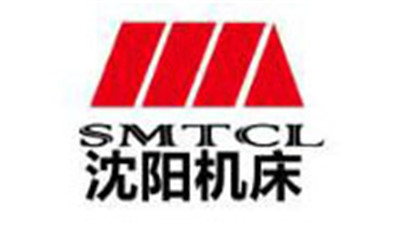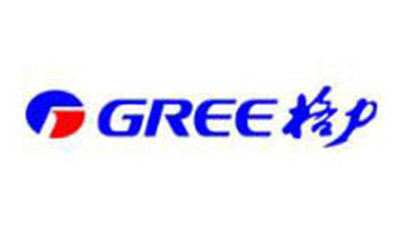Understanding Wire Type Transformers: How They Power Modern Electronics Efficiently
Table of Contents
- The Basics of Wire Type Transformers: Definition and Functionality
- Types of Wire Type Transformers: An Overview of Common Variants
- Efficiency in Power Transmission: How Wire Type Transformers Optimize Energy Use
- Applications of Wire Type Transformers in Modern Electronics
- Future Trends in Wire Type Transformer Technology and Performance
- Challenges and Innovations in Wire Type Transformer Design
- Exploring the Benefits and Applications of Three-Phase Dry Type Transformers in Modern Electrical Systems
- FAQS
- Conclusion
- Related Posts
In the world of modern electronics, Wire Type Transformers are pretty much essential when it comes to keeping power distribution efficient and reliable. As more and more people buy gadgets and devices worldwide, having accurate electronic transformers has become a must-have across various fields — from everyday consumer electronics to industrial machines. According to a recent report from the International Electrotechnical Commission (IEC), the market for Wire Type Transformers is expected to grow at about 5.2% each year over the next five years. This growth is mainly driven by increased investments in renewable energy and the rise of smart grid tech, which is pretty exciting stuff.
Given all this progress, most experts agree that understanding how Wire Type Transformers work is really important. Dr. Michael Thompson, a well-respected expert in electrical engineering, stresses that these transformers aren’t just about voltage regulation — they also play a big role in making energy use more efficient. Basically, they’re a must-have for today’s electronic systems.
At Dezhou Xinping Electronics Co., Ltd., we’ve been leading the charge in this space since we started back in March 2001. As a high-tech company, our focus is on making super precise electronic transformers. This commitment helps us stay ahead in the market, meeting the growing needs of different industries while always keeping quality and efficiency at the top of our list. We’re proud to be part of this innovation wave, helping push the industry forward one transformer at a time.

The Basics of Wire Type Transformers: Definition and Functionality
Wire type transformers are essential components in the modern electronics landscape, designed to convert voltages efficiently while maintaining performance integrity. Unlike traditional transformer designs, wire type transformers leverage precision engineering to achieve a compact size and lightweight structure, which are critical for today’s portable devices. Their functionality hinges on the principle of electromagnetic induction, where an alternating current in the primary winding generates a magnetic field that induces a voltage in the secondary winding. This process allows for efficient energy transfer, which is reflected in data from the International Electrotechnical Commission, indicating that wire type transformers can achieve efficiency ratings exceeding 95% under optimal conditions.
At Dezhou Xinping Electronics Co., Ltd., a national high-tech enterprise founded in March 2001, we specialize in the manufacturing of precision electronic transformers that meet rigorous industry standards. Our products cater to various applications, from telecommunications to automotive electronics, aligning with the current demand for optimized power solutions. Reports from the Institute of Electrical and Electronics Engineers highlight that the global market for transformers, including wire type varieties, is expected to grow significantly, driven by advancements in technology and increasing consumption of energy-efficient equipment. This trend underscores the importance of reliable manufacturers like us in providing transformative solutions that support the evolving needs of modern electronics.

Types of Wire Type Transformers: An Overview of Common Variants
Wire type transformers play a crucial role in the functioning of modern electronics by efficiently converting voltage levels. These devices come in various types, each designed to meet specific requirements across a range of applications. Common variants include step-up and step-down transformers, toroidal transformers, and isolation transformers, each offering unique benefits in terms of efficiency, space-saving design, and improved safety.
Dezhou Xinping Electronics Co., Ltd., a national high-tech enterprise established in 2001, is at the forefront of precision electronic transformer manufacturing. Our products are engineered to meet rigorous industry standards, ensuring reliability and performance in diverse electronic systems. According to a recent industry report, the global transformer market is projected to grow significantly, reaching a valuation of over $50 billion by 2025, highlighting the increasing demand for innovative transformer solutions.
**Tips:** When selecting a transformer for your electronic applications, consider the power rating and efficiency to optimize performance. Additionally, ensure compatibility with your circuit requirements to prevent energy loss and enhance device longevity. Staying informed on the latest advancements in transformer technology can also provide insights into future-proofing your designs.
Efficiency in Power Transmission: How Wire Type Transformers Optimize Energy Use
Wire type transformers play a crucial role in modern electronics by enhancing power transmission efficiency. These transformers rely on their simple yet effective design, which facilitates the transformation of voltage levels without significant energy losses. By employing tightly wound wire coils, they effectively minimize resistance and heat generation, ensuring that a higher percentage of the electrical energy remains usable. This feature is particularly beneficial for applications where energy conservation is paramount.
Additionally, wire type transformers optimize energy use by allowing for scalable and adaptable voltage conversion. This flexibility enables various electronic devices to operate within their optimal power range, thus improving overall system performance. Moreover, the compact nature of wire transformers makes them ideal for integration into miniaturized electronic devices, further ensuring that energy resources are utilized efficiently. As industries continue to seek ways to reduce energy consumption and enhance sustainability, wire type transformers emerge as a key component in achieving these goals.
Applications of Wire Type Transformers in Modern Electronics
Wire type transformers play a critical role in powering modern electronics, serving a wide array of applications across different sectors. Their design allows for efficient voltage transformation, making them ideal for use in devices such as power supplies, audio equipment, and renewable energy systems. According to a report by Allied Market Research, the global transformer market is projected to reach $77.33 billion by 2027, with wire type transformers being a significant contributor to this growth due to their compact size and efficiency in energy conversion.
At Dezhou Xinping Electronics Co., Ltd., which has been a leader in precision electronic transformer manufacturing since its establishment in March 2001, we embrace the advancements in wire type transformer technology. Our products are tailored for high-performance applications in telecommunications and consumer electronics, meeting the industry's increasing demand for miniaturization and energy efficiency. Notably, recent data from the International Energy Agency indicates that improving transformer efficiency can lead to energy savings of up to 30%, highlighting the importance of advancements in transformer technology in combatting energy loss. As the electronics market continues to evolve, wire type transformers will undoubtedly remain at the forefront of powering innovations.
Future Trends in Wire Type Transformer Technology and Performance
The evolution of wire type transformers is significantly shaped by advancements in material science and digital technology, positioning them at the forefront of modern electronics. An industry report by MarketsandMarkets predicts that the global transformer market will reach USD 62.6 billion by 2025, driven largely by the increasing demand for efficient energy conversion systems. Wire type transformers, in particular, are gaining attention due to their lightweight and compact design, making them ideal for applications ranging from consumer electronics to electric vehicles.
Future trends indicate a shift towards enhanced performance through innovations like the integration of smart technologies and the use of high-performance materials such as amorphous steel and advanced composites. According to a report from ResearchAndMarkets, the advanced transformer market is anticipated to witness a CAGR of 6.8% over the next five years, reflecting the push for improved efficiency and reduced energy losses. As the industry moves towards sustainable and efficient power solutions, wire type transformers are set to play a pivotal role in meeting the energy demands of the future while minimizing environmental impact.

Challenges and Innovations in Wire Type Transformer Design
The design of wire type transformers presents several challenges that engineers must navigate to ensure efficiency and reliability in modern electronic applications. One of the primary issues is managing heat generation during operation. As transformers increase in size and power capacity, the risk of overheating can lead to failures or reduced lifespan. To combat this, designers are exploring advanced materials and cooling techniques that help dissipate heat more effectively.
Innovation in winding techniques also plays a crucial role in transforming wire type transformers. Traditional winding methods often lead to increased losses and less optimal electromagnetic performance. Modern approaches, such as using computer-aided design (CAD) software for precise winding configurations or integrating multilayer designs, are being implemented to enhance performance. Additionally, the introduction of smart materials that can adjust their properties based on environmental changes is paving the way for transformers that can operate under varying conditions while maintaining efficiency. These advancements demonstrate a commitment to improving design methodologies in this essential technology.
Exploring the Benefits and Applications of Three-Phase Dry Type Transformers in Modern Electrical Systems
Three-phase dry type transformers are increasingly gaining recognition in modern electrical systems due to their versatility and efficiency. These transformers play a crucial role in various applications, including servo driver power supplies, wind power generation, and photovoltaic power generation. By converting electrical energy from one voltage level to another, they ensure that the power supply is optimized for specific machinery and processes, enhancing overall system performance.
In mechanical industries, particularly in the operation of CNC machine tools, three-phase dry type transformers are vital for providing a stable and reliable power source. Their robust design allows them to operate efficiently in environments where moisture and dust may present challenges. Moreover, with the growing trend of renewable energy solutions, the application of these transformers in wind and solar power generation systems supports the transition to sustainable energy sources while maintaining high standards of operational safety and performance. The compact nature of dry type transformers further facilitates their integration into modern electrical grids, making them an essential component of advanced energy systems.
FAQS
: The growth is largely driven by the increasing demand for efficient energy conversion systems, with the global transformer market predicted to reach USD 62.6 billion by 2025.
Innovations in materials such as amorphous steel and advanced composites are enhancing the performance and sustainability of wire type transformers.
Digital technology is facilitating the integration of smart technologies, improving efficiency and control in transformer operations.
Key challenges include managing heat generation during operation and ensuring efficiency and reliability, especially as transformers increase in size and capacity.
Designers are exploring advanced materials and cooling techniques to dissipate heat more effectively and reduce the risk of overheating.
Modern approaches, such as computer-aided design (CAD) and multilayer designs, are being implemented to optimize electromagnetic performance and reduce losses.
The advanced transformer market is anticipated to witness a CAGR of 6.8% over the next five years, reflecting a push for improved efficiency.
Smart materials that can adapt their properties based on environmental changes are paving the way for more efficient transformers that function under varying conditions.
Wire type transformers are ideal for applications in consumer electronics as well as electric vehicles due to their lightweight and compact design.
Innovations in design methodologies contribute to enhanced performance, reliability, and sustainability, positioning wire type transformers as crucial for future energy solutions.
Conclusion
Wire Type Transformers play a crucial role in powering modern electronics efficiently. These transformers, which are designed to convert electrical energy from one voltage level to another, come in various types that cater to specific applications. By optimizing energy use during power transmission, Wire Type Transformers minimize losses and enhance overall system efficiency. Their significance spans multiple industries, providing reliable solutions for electronic devices and systems.
The future of Wire Type Transformer technology is promising, with ongoing innovations aimed at improving performance and addressing design challenges. Companies like Dezhou Xinping Electronics Co., Ltd., a national high-tech enterprise established in 2001, are at the forefront of this development, manufacturing precision electronic transformers that meet the evolving demands of the electronics market. As technology advances, Wire Type Transformers are expected to become even more integral to the functionality of modern electronics.
Related Posts
-

Unlocking the Advantages of Axial Leaded Power Ferrite Bead Inductors for Modern Electronics
-

How to Select the Best Voltage Regulator Transformer for Your Needs
-

Understanding the Challenges Faced with Converter Transformers in Industrial Applications
-

Revolutionizing Power Efficiency: The Future of Ferrite Transformers in Renewable Energy Systems
-

Unlocking Efficiency: How Three Phase Transformers Revolutionize Industrial Power Systems
-

How to Choose the Right Substation Transformer for Your Energy Needs Based on Load Calculation
Blog Tags:


















